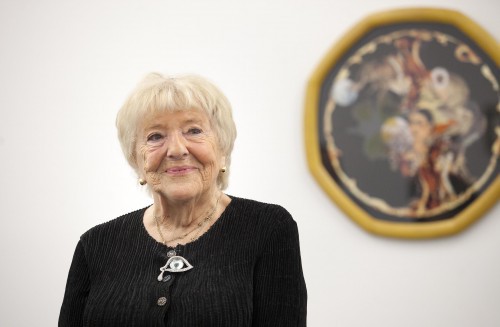Your currently viewing RAW Modern | Switch to RAW Contemporary
L'Attelage Effrayé par un Oiseau, 1965
Catalogue essay by Blanche Llewellyn
“It’s obvious that I was fed on surrealism from the cradle. But it was natural. It was my environment; I didn’t know any other.” – It’s impossible, given the colossal legacy, to dissociate the destiny of Aube Elléouët from that of her father, André Breton, the so-called “Father of surrealism“. Aube, a remarkable artist in her own right, chooses not to dwell on her heritage: “I prefer not to discuss my father, although I adore him!” she stated in a 2013 interview with le Télégramme.
Since the 1970s, Aube Breton Elléouët has been creating collages using postcards, playing cards, and image clippings from books and magazines that she found in garage sales and second-hand bookstores.
These images from the past, sometimes linked to the world of childhood, are repurposed, producing a poetic effect imbued with humor. Her artworks are playful, but they speak also of life, our relationship with the universe, nature, as well as gender, love and human relations. Through her collages, Aube Breton Elléouët creates her own poetic language imbued with romanticism, sometimes revealing the subversive side of her dreams.
Echoing her own situation – being overshadowed by her father, Aube Ellouet enjoys paying tribute to women artists such as Frida Kahlo, with whom she spent a year in 1943, along with her mother Jacqueline Lamba (1910-1993), also a painter and visual artist who, although she achieved some fame, was also outshone by her celebrated husband.
The early collage “L’attelage Effrayé par un oiseau” depicts an unusual – and somewhat menacing scene – composed of assembled images – featuring an oversized bird causing chaos, frightening both the horses and men. Dating from the mid 1960s

